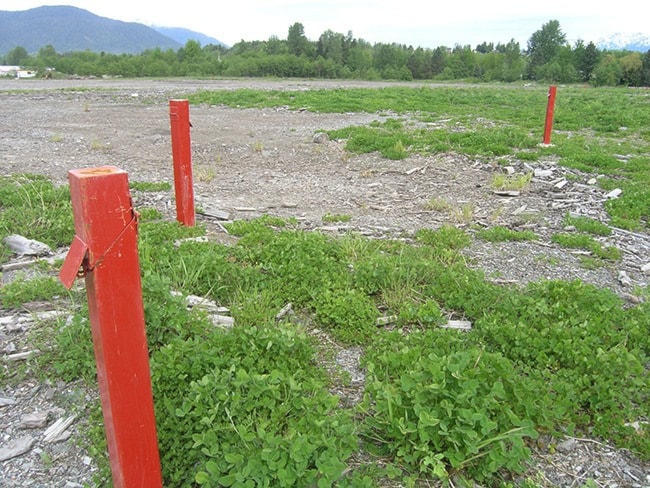THE City of Terrace is expanding its efforts to clean up and then sell land that it owns which was once used for industrial purposes.
This time it has hired a contractor to install monitoring wells on three parcels of land totalling 6.13 hectares along and adjacent to the 5000 block of Keith in the heart of the city’s light industrial area.
That is to provide information on what is underground to then determine what is needed for the city to obtain environmental clearance from the province for the property, so that it can more easily sell the parcels.
Properties once used for industrial purposes are called “brownfield” and any contaminants found in the soil must be dealt with before an environment all-clear is given by the province.
“We will know in the next couple of months what the work plan will be based on the data analysis,” says city economic development officer Danielle Myles, adding that costs won’t be known until later.
But the city has set aside $250,000 from its land acquisition reserve fund to pay for whatever is planned for the three parcels, she said.
That fund was bolstered several years ago when the city sold just over two hectares on the northwest corner at the intersection of Keith and Kenney for $1.025-million to the company which owns the Chrysler and Toyota dealerships here.
Two of the city parcels are west along the 5000 block of Keith from the above two hectares and the third is north of the two hectares and bounded on the north by the CN line.
The city has no active potential purchasers for the parcels but has received inquiries, said Myles.
“We are carrying out this work independently and have shared the same information about the property and possible timelines for redevelopment of the property with any proponent that has expressed interest,” she said.
One interested party is the Pomeroy Group, the owner of the Chances gaming centre here, which has been scouting locations in and around Terrace with an eye to a large development incorporating a hotel, meeting spaces and a casino.
The city unveiled two years ago what it is calling the Keith Estates Neighbourhood Concept Plan taking in the city-owned parcels and that which belongs to private interests.
In total, the plan would involve 29 hectares along the north side of the 5000 block of Keith.
That area is bisected by Kenney and then runs east to the Sande Overpass.
It calls for a blend of residential and commercial development, citing the need for both given the potential for growth in the city and region should large scale industrial development ever take place.
The land west of the Keith and Kenney intersection once formed the log yard for a large sawmill owned by Skeena Cellulose which was located on the land running east of the intersection toward the Sande Overpass.
Skeena Cellulose’s parent, Repap, began experiencing difficulties in the late 1990s and eventually went out of business.
A local company called the Terrace Lumber Company bought the mill but closed it soon after, setting the stage for a series of events which resulted in the city acquiring the majority of the sawmill lands after taxes weren’t paid.
This is the second time the city has sought to turn a brownfield location it owns into a sellable commodity.
It is still seeking the final environmental all-clear from the province so it can close out the sale of a majority of the former Terrace Co-op lands along Greig to a Calgary-based hotel company called Superior Lodging.
The sale of 2.79 acres for $877,500 was first announced three years ago but has been waiting on the province’s environmental green light.
That location on Greig between Kalum and Emerson was once the location of a thriving retail and food shopping complex, including a gasbar.
But it closed in the late 1990s after the area’s once dominant forest industry crashed.
The property was then purchased by a private developer who then sold it to the city for $1-million in 2005, a move which sparked controversy. And it was the city that eventually demolished the shopping centre building in the expectation the land would be more attractive to prospective purchasers.
